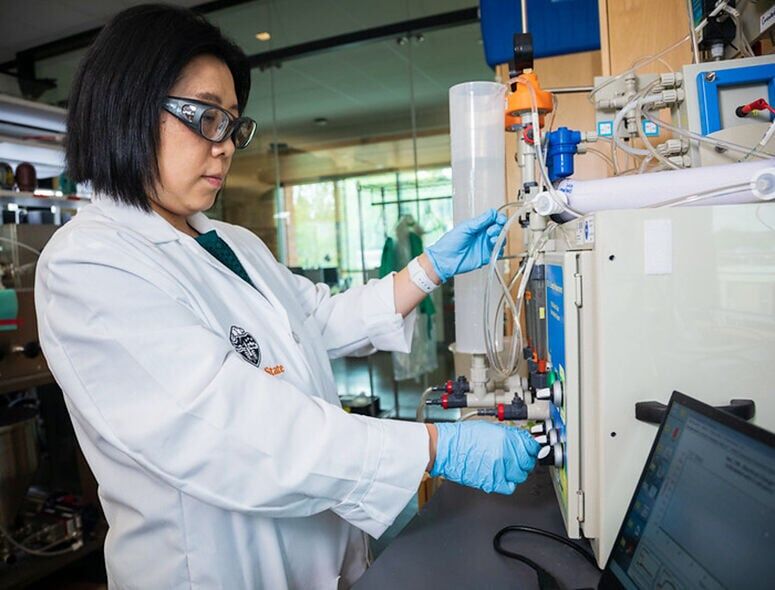Research aims to make digester water usable for irrigation
Published 5:00 pm Friday, August 4, 2023

- Xue Jin, assistant professor of environmental engineering at Oregon State University, is developing hybrid filtration technology to enable the use of reclaimed water in agriculture, reducing the need for freshwater and chemical fertilizers.
CORVALLIS — A team of researchers at Oregon State University is developing new technology to recycle wastewater from anaerobic digesters so it can be used to irrigate crops.
Trending
Xue Jin, an assistant professor of environmental engineering, is leading the project after receiving $750,000 from the United States Department of Agriculture in April.
Agriculture accounts for 70% of all freshwater consumed globally, Jin said. Meanwhile, farmers and ranchers continue to face mounting pressure from more frequent and severe droughts, along with rising fertilizer costs.
“There is a critical need for effective treatment technologies that provide safe reclaimed water for agricultural irrigation,” Jin said.
Trending
Her system aims to treat the murky liquid discharge from anaerobic digesters at municipal sewage plants and large livestock operations, including dairies.
Anaerobic digestion takes place in sealed vessels where the waste is kept in an oxygen-free environment. Bacteria and other microorganisms gradually break down the material, releasing biogas that can be captured to make electricity.
The leftover effluent cannot be directly sprayed on crops, Jin said, because it contains heavy metals and other contaminants that can build up in plants and make people sick.
Instead, she has spent the last year and a half experimenting in her lab with technology to convert the waste into an agricultural product.
The goal, Jin said, is to save water while also reducing farmers’ dependence on traditional chemical fertilizers — helping them to reduce costs and better protect the environment.
“Fertilizer runoff is a major source of pollution for surface water,” she said. “This results in algal blooms that contaminate drinking water sources and produce further harmful ecological effects downstream.”
The system works in two stages. First, an electrically charged membrane attracts ions such as ammonium, phosphorous and potassium and concentrates them into a nutrient-rich brine. Then a forward-osmosis membrane removes harmful contaminants from the remaining water, which is recombined with the brine to make the final product.
Lab tests show the technology can recover 80% of clean water and nutrients.
“When the technology is scaled up with optimal operating conditions, that number could go even higher,” said Quang Ngoc Tran, an OSU graduate student working with Jin. “The output is basically pure water, with a little bit of dissolved salts that are the plant nutrients.”
Tala Navab-Daneshmand, an associate professor of environmental engineering at OSU, and David Bryla, a research horticulturist with the USDA Agricultural Research Service in Corvallis, are also part of the team.
Together, they are running experiments using the treated wastewater to grow several types of crops, including blueberries and raspberries, in a greenhouse and evaluating whether it is safe and effective compared to normal irrigation.
Jin said they are still in the process of collecting data, but hope to have their results published by September.
If successful, Jin said they will apply for more funding to scale up the technology. She believes it could eventually be deployed on farms that already have anaerobic digesters, or those that are near municipal plants.
“If we can develop an affordable system that will effectively reduce the costs of crop production, that could be very attractive to farmers,” she said.









